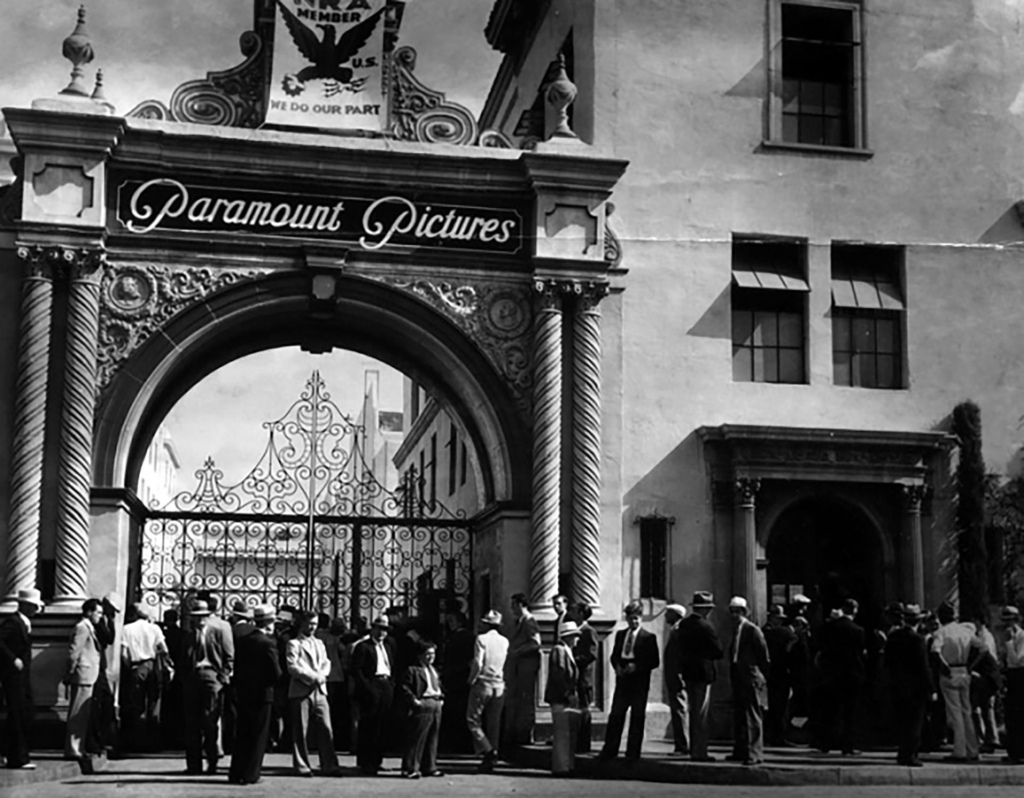The rise of the Studio System:
In the U.S filmmaking was viewed as a business. Groups formed organisations and competed with each other to make more money from their film productions to invest into the next ones. Because of this spirit of entrepreneurship, in the 1920s a group of film studios were formed to produce, promote and distribute quality films and collect the profits for them to make the next one even more attractive to audiences. 5 main studios grew to such a significant extent that they owned most of the productions, cinemas, actors, etc. These were MGM, Paramount, Fox Film Corporation, Warner Bros. And RKO. Each one of these held a unique selling point that was specific to them as a studio. For example, Warner Bros. Made dark, gritty crime films, whereas Paramount was known for light entertainment and comedy. MGM produced bright, glitzy and glamorous pictures, RKO produced horror and film noir movies. There were also 3 smaller studios, United Artists, Columbia Pictures, and Universal Pictures.
These studios were vertically integrated, so that they owned every stage of the production process. From the initial birth of an idea to its final showing in cinemas, the film was owned entirely by a single studio. The studios also owned the actors, directors, editors and everyone else involved in the production process through contracts. After the studio system rose, the star system did.
The Star System: and unbreakable contracts:
The fame, looks, personality and prestige of certain actors became the main selling point for a film, for example Humphrey Bogart was recognisable as playing hardened, heroic figures, and Marilyn Monroe was distinct for her beauty and charm. The studios recognised their profitability, and competed fiercely to employ actors through contracts to make as much money through as many films as them as possible. Though the actors were paid well, they were kept bound to work under a single studio through ‘unbreakable contracts’. They had to work in a certain amount of films, and to keep the actors under their payroll, the studios would often not make any more films with them to avoid them from escaping these contracts.
The fall of the Studio System:
When the Great Depression struck in the 1940s, the big 5 studios were hit hard, RKO eventually collapsing, while the others were bought and sold between bigger companies. The 3 other, smaller film studios prevalent in the ‘Golden Age of Hollywood’ survived this crash through various methods. Universal was located outside of Hollywood, and adapted by changing to producing Blockbusters instead in a gamble to make more money. United Artists was made to give better deals for the artists involved alongside the studio, and Columbia were not vertically integrated, choosing instead to produce ‘B movies’ which they sold to the bigger studios to be screened in their cinemas to accompany the larger productions. They were also one of the first studios to embrace TV in the 1950’s and 1960’s, selling their own studios in 1972.

You must be logged in to post a comment.